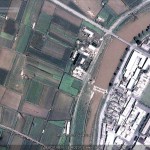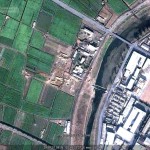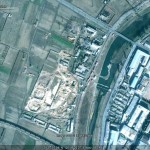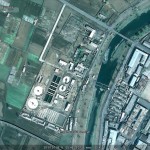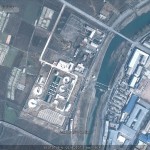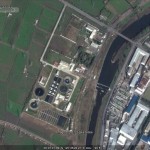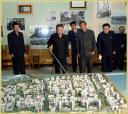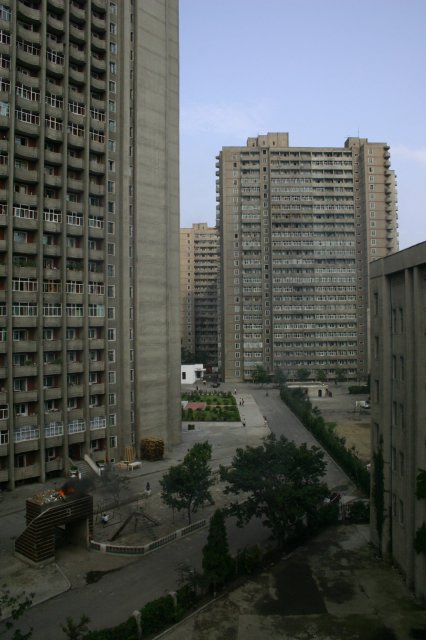By Benjamin Katzeff Silberstein
Kim Jong-un has made at least two announcements recently, as the Korean Worker’s Party heads for its 7th Party Congress in May, about construction projects to be done. One of them is an orphanage in Ryanggang province, Daily NK reports:
Projects underway to promote Kim Jong Un’s legacy as a leader ahead of the 7th Party Congress in May are said to be in full swing across the nation. One such project taking place in Ryanggang Province calls for the full mobilization of residents to build an orphanage as an expression of the leader’s “love for the next generation,” Daily NK has learned.
“Authorities have recently been harassing residents saying that the orphanage under construction next to Kim Jong Suk Teachers’ College in Yonbong-dong needs to be ready for the Marshal’s (Kim Jong Un) inspection by the time of the Party Congress,” a source in Ryanggang Province told Daily NK on Thursday. “The provincial party office has been hurrying people along, claiming the construction must be completed before the event.”
Progress was said to be slow during the winter, which was unseasonably cold, but construction efforts are now appearing to ramp up.
The project is being driven by the provincial head secretary and other cadres from the provincial Party and People’s Committee and is being promoted as a means to express loyalty to the leader, who has emphasized his “love for children,” said the source.
She added that cadres associated with the efforts, who have confidently stated that the facility will see completion before the Party Congress, have also been intensifying crackdowns on those seeking to avoid mobilization, out of concern that failure to complete the project on time may lead to issues of accountability.
“Vendors who are busy trying to make a living in the market were often able to get out (of mobilization) with bribes, but even that isn’t easy now,” a separate source in Ryanggang Province explained.
“The price for skipping a day of mobilization is now up to 10 RMB (13,000 KPW) a day per head, so some find it more affordable to just go to the construction site.”
The 13,000 KPW demanded is enough to purchase approximately 2kg of rice based on current prices, which is far from negligible for most members of the public. The higher price tag in effect acts as a tool to turn up the heat on people for mobilization.
The pressure to complete the project before the major political gathering has led to mobilization of students in the afternoons and workers at state-run factory as well.
The near full mobilization also involves specialized colleges, meaning that among the younger generation, stormtroopers (who are working on a railway project in Samjiyon) are seemingly the only group among ordinary residents that are exempt from the orphanage project.
Full article:
Kim Jong Un calls for construction of new orphanage in time for Party Congress
Kang Mi Jin
Daily NK
2016-04-19
IFES at Kyungnam University has also published an analysis of the news about the Ryomyong street project, which Curtis has already written about in this blog. They note that the recent sanctions do not seem to have altered plans for the project. Kim Jong-un’s rhetoric instead highlights the project as a blow against the international community and the US — North Korea will go full steam ahead on its own policies and no outside pressure can hold them back (my emphasis below):
On March 18, the state media Korean Central News Agency (KCNA) reported that Kim Jong Un declared the construction of ‘Ryomyong Street’, which is to be built between Kumsusan Palace of the Sun and the Ryonghung Crossroads in Pyongyang. The street’s name signifies a place where ‘the dawn breaks in the Korean revolution’. Kim also mentioned that the area is to be surrounded by magnificent skyscrapers and multi-level buildings that fit the geographical characteristics surrounding the palace, displaying the Party’s idea of giving importance to science and talents in socialist Korea.
[…]
Along these lines, Kim put emphasis on the policy of securing building materials in constructing the new street and to diversify the size, design and color of decorative objects on the exterior of buildings. He also instructed for the mobilization of ‘soldier-builders’ who previously worked on the construction of Mirae Scientists Street. The construction of the new street shall be carried out with “Mallima speed” during the country’s ‘70-day campaign’ in run-up to the Party Congress scheduled for this upcoming May. The news report also stated that “the party, state, and society should render positive assistance to the construction and the Cabinet, commissions, ministries and national institutions take the lead in this work.”According to the report, Kim Jong Un also said that “The construction of the street is not merely for formation of a street but serves as a political occasion of clearly showing the spirit of the DPRK standing up and keeping up with the world, despite all sorts of sanctions and pressure by U.S. imperialists and their followers, the appearance of the country advancing to realize the great ideal of the people and truth that the DPRK is able to be well-off in its own way and nothing is impossible for it to do.” The construction of the street appears in part as a means to show off the strength of ‘Songun’ Korea, following in the footsteps of Kim Jong Il’s policy.
Despite the strong sanctions imposed upon the country by the international community, North Korea is striving to achieve some form of economic success. The 70-day campaign has been initiated in the run-up to the Seventh Congress of the Workers’ Party. North Korean media are boasting about the country’s successes on the production front since the campaign’s initiation, saying “under the Juche ideology, people are working hard especially in the fields of electricity, coal, metal, and railroad transportation that they have achieved great success in the [campaign’s] first week.”
Full article here:
North Korea to Construct ‘Ryomyong Street’ Despite Sanctions
Institute for Far Eastern Studies
03-29-2016

